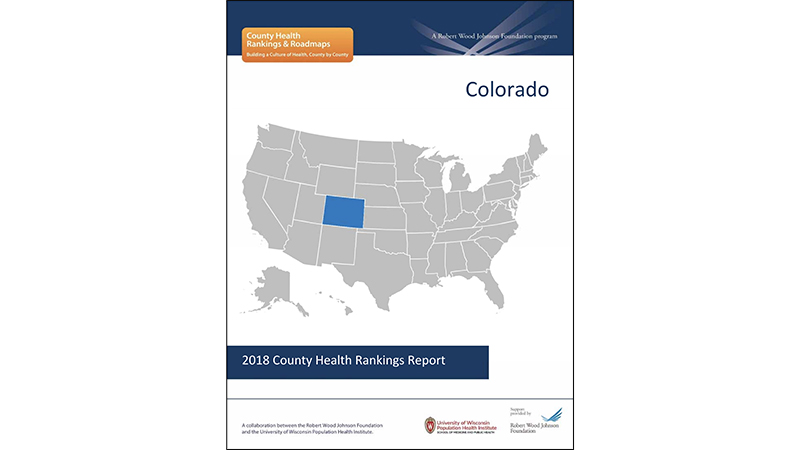

Where we live impacts our health.
This is now a well-known fact that researchers from the University of Wisconsin Population Health Institute have unpacked for nearly a decade. Their County Health Rankings report, published annually in collaboration with the Robert Wood Johnson Foundation, analyzes 71 health-related measures in nearly every county in the U.S. to understand how differences in opportunity in the places where we live contribute to health inequities.
Yet “where you live isn’t the only thing that determines how healthy you are,” explained Amanda Jovaag, study co-author and rankings team director for the County Health Rankings program at the University of Wisconsin-Madison School of Medicine and Public Health. “There are other factors that can influence the way that health varies within states and in communities.”
That’s why this year, researchers looked at how health varies by race and ethnicity, as well as by place. Without exploring and understanding how these variables intersect, “we will never make decreases in health inequity,” said Jovaag.
Their findings, published as the 2018 County Health Rankings, show significant health gaps exist not only by place, but also among racial and ethnic groups. In fact, health can vary by race and ethnicity as much as it can by place, the report revealed. The report examined health outcomes (the measures of how long people live and how healthy people feel) as well as health factors (the variables that drive how long and how well we live).
“Health outcomes are the end of the train, but we also wanted to take a look at what causes health,” said Jovaag. The 30 health factors examined in the report were divided into four categories: health behaviors (e.g., adult smoking, teen births, excessive alcohol consumption), clinical care (e.g., uninsurance, preventable hospital stays, concentration of primary care physicians), social/economic factors (e.g., high school graduation rates, percentage of children living in poverty, unemployment, etc.) and physical environment (e.g., driving alone to work, severe housing problems, drinking water violations).
When comparing Colorado’s health factors to national averages, our state, on the whole, is above average. We have less childhood poverty (13 percent of children in Colorado are living in poverty compared to the U.S. rate of 20 percent), slightly lower teen birth rates (24 births per 1,000 female population, ages 15‐19, compared to the U.S. rate of 27 per 1,000) and lower rates of uninsurance (9 percent of Coloradans are uninsured compared to 11 percent nationally). But this doesn’t tell the complete story, said Jovaag, as there are significant gaps among counties and between racial/ethnic groups across the state.
“[Colorado] is such a healthy place overall, but it really does have big differences [in health factors among communities and racial/ethnic groups],” said Jovaag. “Certain groups are not getting the same access to opportunities that we know build health.” This is likely because “policies and programs that make health the easy choice are probably not being implemented equally around the state,” she added.
Take, for example, Colorado’s percentage of teen birth rates, which has dropped dramatically in recent years thanks in large part to the state’s Family Planning Initiative. (The Colorado Trust was one of several foundations to provide bridge funding for the program in 2015.) Some counties, like Pitkin, have among the best rates in the nation (4 births per 1,000 females, ages 15-19), while others, like Crowley, have among the worst (55 births per 1,000).
A similar gap exists when comparing rates between different racial or ethnic groups: teen birth rates among whites in the state are 14 per 1,000, compared to 29 per 1,000 for blacks, 30 per 1,000 for American Indians/Alaskan Natives and 45 per 1,000 for Hispanics.
These numbers matter because “teen mothers are less likely to complete high school and face challenges to upward economic mobility,” the authors wrote. “In turn, their children often have fewer social and economic supports and worse health outcomes.”
Another example: childhood poverty rates. The percentage of children in poverty among Colorado counties ranges from 3 percent (Douglas) to 43 percent (Costilla), and certain racial and ethnic groups are disproportionately affected within these counties. In Costilla, 59 percent of Hispanic children are living in poverty, compared to 39 percent of whites; in Douglas, 8 percent of Hispanic children live in poverty, compared to just 3 percent of whites. These early-age inequities can translate into serious, long-term gaps in health.
“Poverty limits opportunities for quality housing, safe neighborhoods, healthy food, living wage jobs, and quality education,” the authors wrote. “As poverty and related stress increase, health worsens.”
Colorado’s teen birth and childhood poverty rates are just two of dozens of examples of significant health inequities that persist across and within communities. The report’s nuances and complexities should prompt questions for policymakers, said Jovaag.
“What does this say about our state? What can we do better here? Where are these disparities?” she said. “What opportunities are missing for the communities where people are not experiencing the same health as elsewhere in the state?”